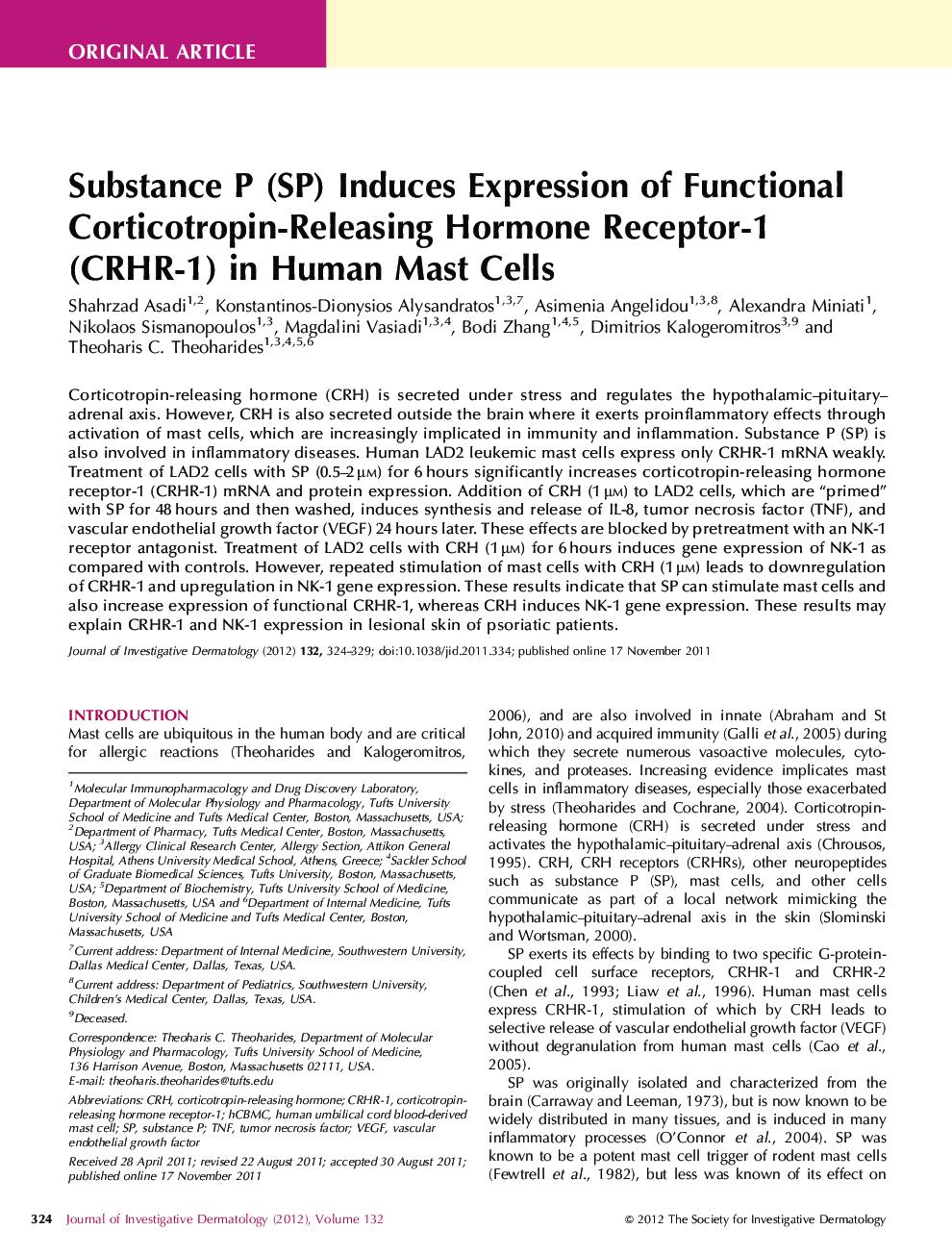| کد مقاله | کد نشریه | سال انتشار | مقاله انگلیسی | نسخه تمام متن |
|---|---|---|---|---|
| 3216657 | 1203578 | 2012 | 6 صفحه PDF | دانلود رایگان |

Corticotropin-releasing hormone (CRH) is secreted under stress and regulates the hypothalamic–pituitary–adrenal axis. However, CRH is also secreted outside the brain where it exerts proinflammatory effects through activation of mast cells, which are increasingly implicated in immunity and inflammation. Substance P (SP) is also involved in inflammatory diseases. Human LAD2 leukemic mast cells express only CRHR-1 mRNA weakly. Treatment of LAD2 cells with SP (0.5–2 μM) for 6 hours significantly increases corticotropin-releasing hormone receptor-1 (CRHR-1) mRNA and protein expression. Addition of CRH (1 μM) to LAD2 cells, which are “primed” with SP for 48 hours and then washed, induces synthesis and release of IL-8, tumor necrosis factor (TNF), and vascular endothelial growth factor (VEGF) 24 hours later. These effects are blocked by pretreatment with an NK-1 receptor antagonist. Treatment of LAD2 cells with CRH (1 μM) for 6 hours induces gene expression of NK-1 as compared with controls. However, repeated stimulation of mast cells with CRH (1 μM) leads to downregulation of CRHR-1 and upregulation in NK-1 gene expression. These results indicate that SP can stimulate mast cells and also increase expression of functional CRHR-1, whereas CRH induces NK-1 gene expression. These results may explain CRHR-1 and NK-1 expression in lesional skin of psoriatic patients.
Journal: Journal of Investigative Dermatology - Volume 132, Issue 2, February 2012, Pages 324–329